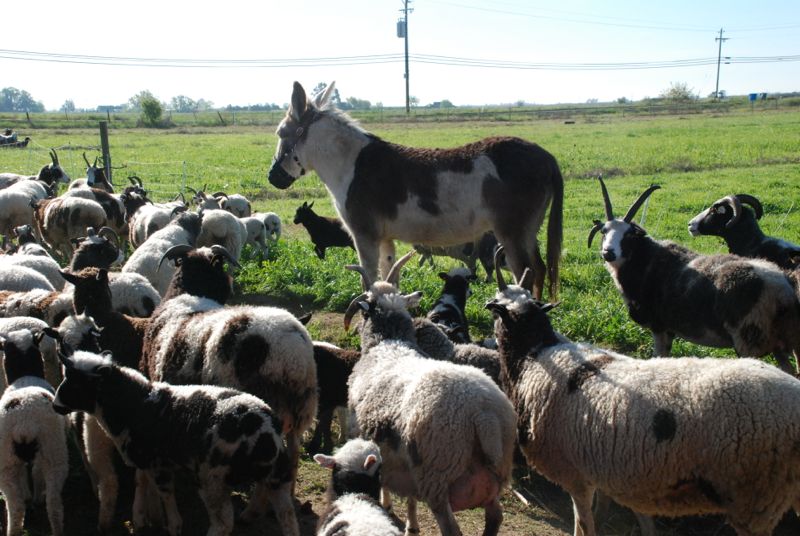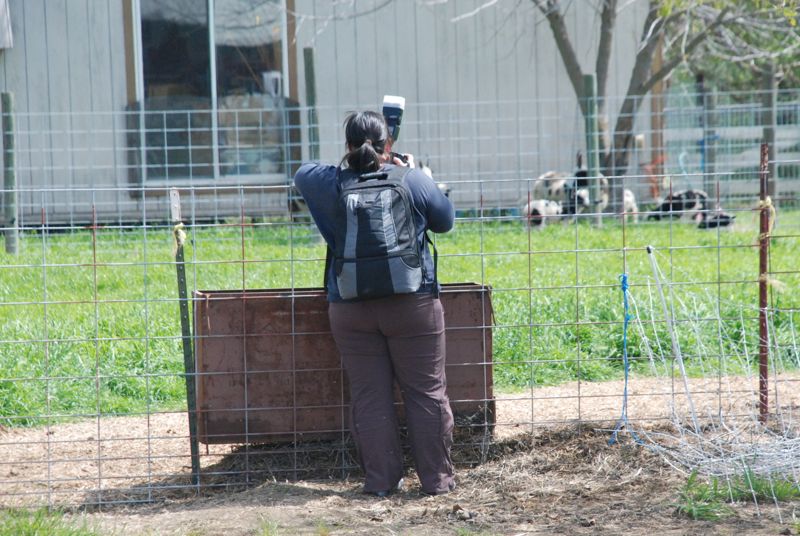Here is a story from last week's lambing.
FAILURE: Last Thursday a big yearling, Helen, delivered a lamb that was dead when I found it.
FAILURE: The Saturday before that a yearling, Hattie, delivered twins. Both were alive, but one was almost dead when I found it. I think she had delivered standing up and when the lamb came out the body landed so that the lamb's neck was bent back with the head behind. The lamb couldn't shake its head to break through the membrane over its face and the mom was still working on Lamb #1. I removed the membrane and the lamb started breathing. I knew that this lamb wouldn't be up right away so I milked the ewe and tube-fed the lamb with colostrum. Then I left the lamb there for the mom to clean and hoped that it would be strong enough to get up. When I came back less than an hour later the lamb was still breathing, but had not moved and was almost dead from cold.
I brought the lamb into the house. At this point it was breathing but it wasn't moving at all. Here is how I warmed it.

This is a pot of water at about 100 degrees. I wasn't keeping track of time (it was already 1 a.m.) but after the first water bath (10 minutes ?) the lamb's body temperature was at 91 degrees. I filled the pot with more warm water two more times and eventually got the lamb's temperature up to just over 100 degrees. I wrapped the lamb in towels warmed in the dryer and tube fed it with more colostrum. I was worried that if it did regain strength it would uncover itself and get cold again so I took it to bed with me. In the morning I thought it was probably dead because it hadn't moved. No. It was alive. I put it in a crate in the kitchen and warmed milk for it. I was surprised that it actually sucked from the bottle. It tried to get to its feet but that was a struggle. Eventually the lamb could get up, but it was very wobbly. I also noticed at that time that one eye was opaque and blind. I couldn't decide it the lamb was also blind in the other eye. I started thinking brain damage from oxygen deprivation just after birth. Eventually the lamb gained strength and was walking around OK, but was still blind in at least one eye.
SUCCESS: When I found Helen's dead lamb I thought about trying to graft this house-lamb onto Helen. Helen wasn't particularly interested, but at least she didn't try to kill the lamb or get away from it. I skinned the dead lamb and used that skin as a coat on the new lamb.

Helen was not enthusiastic, but was more interested now that the lamb smelled right. The next problem was that the lamb had never nursed from a ewe and didn't show any interest. (You can lead a lamb to the milk, but...) I left the lamb there since it didn't seem to be in any danger and I thought that maybe it would at least have a mom to follow around even it I remained the food source. By the time I finished chores it was past feeding time for the lamb. I brought a bottle from the house and the lamb was definitely hungry. After a few mouthfuls and took the bottle away and moved the lamb over to the ewe. She started to root around, found the teat, and started to nurse! SUCCESS

This is the lamb with the dead coat removed.










































































































